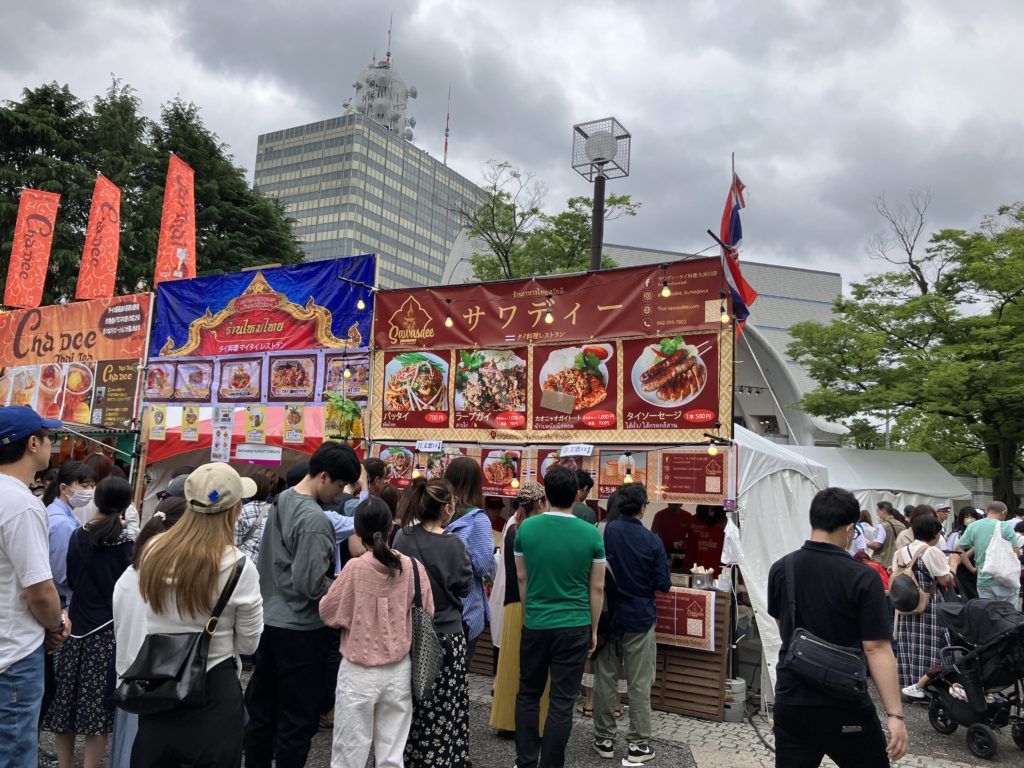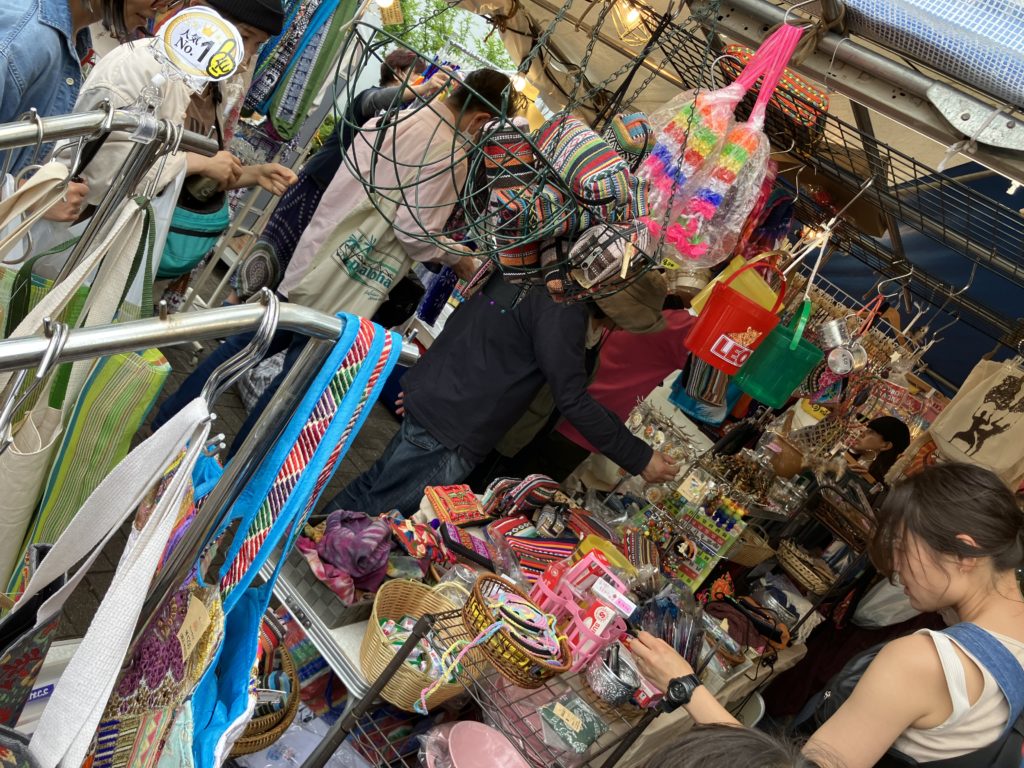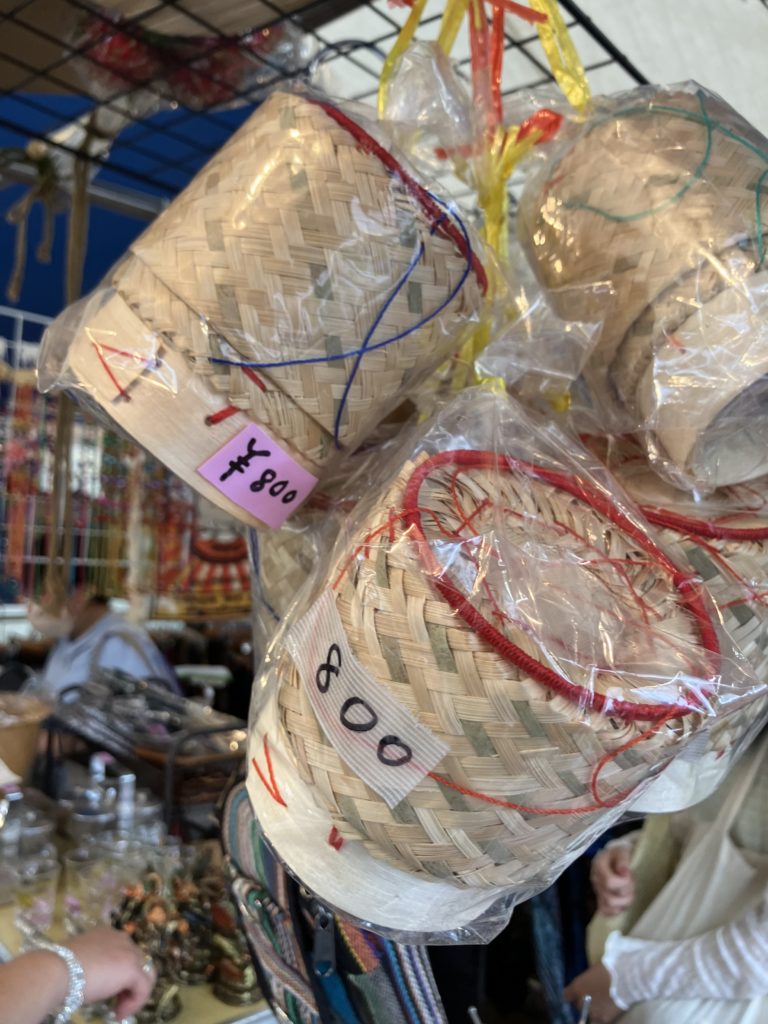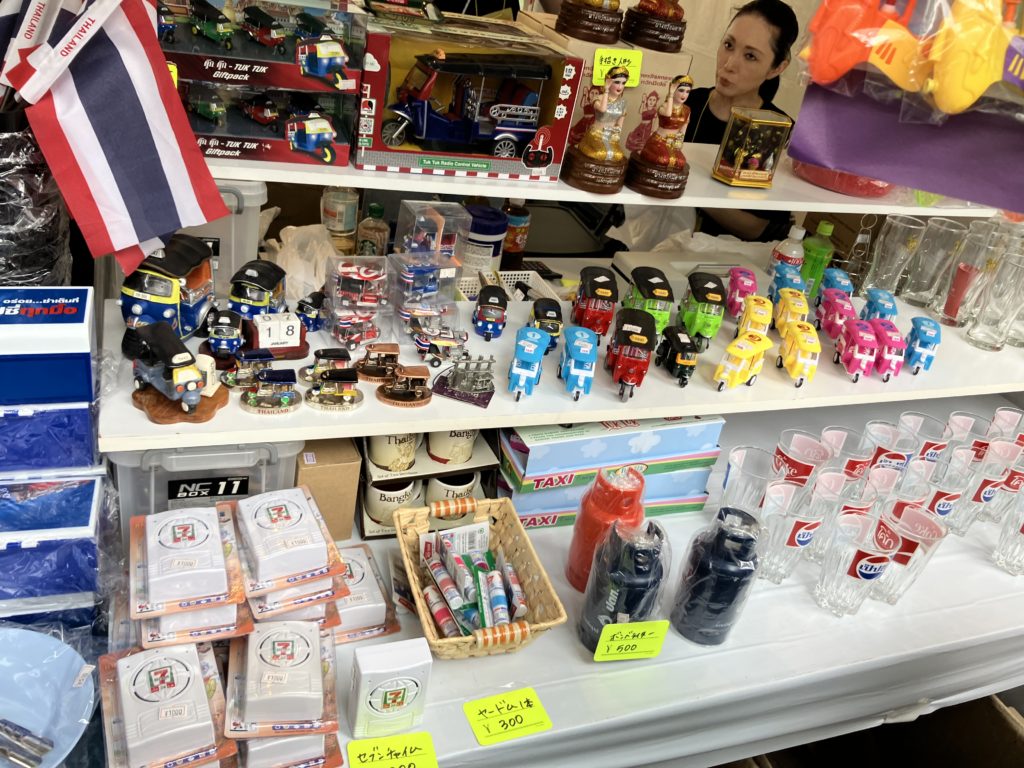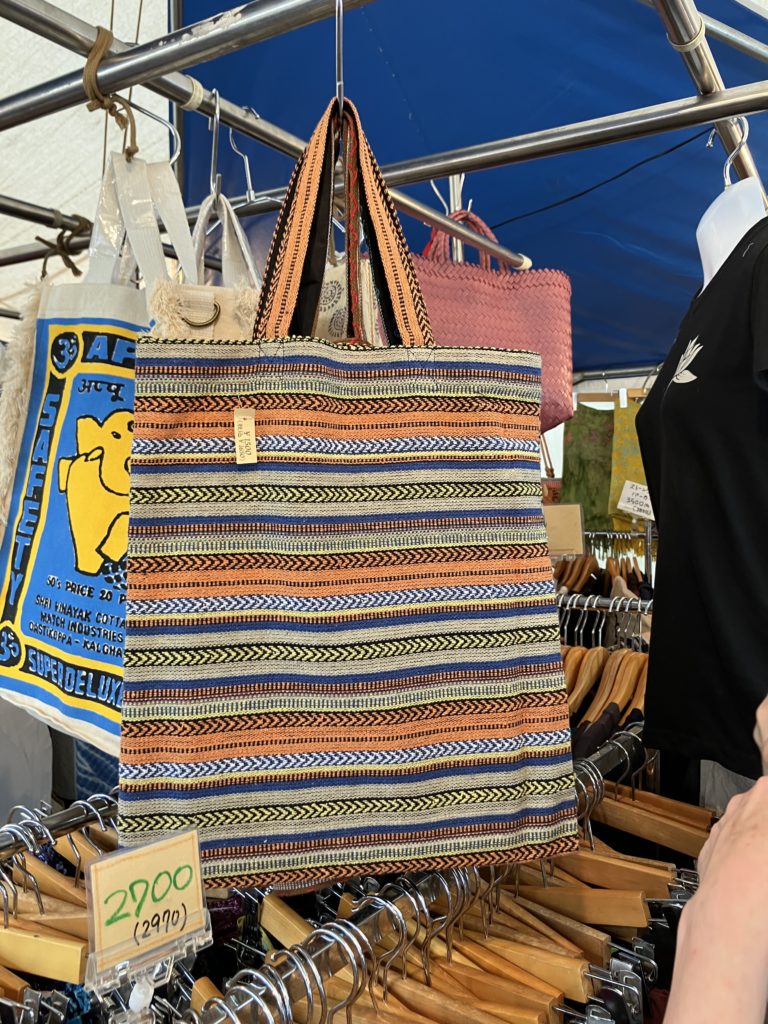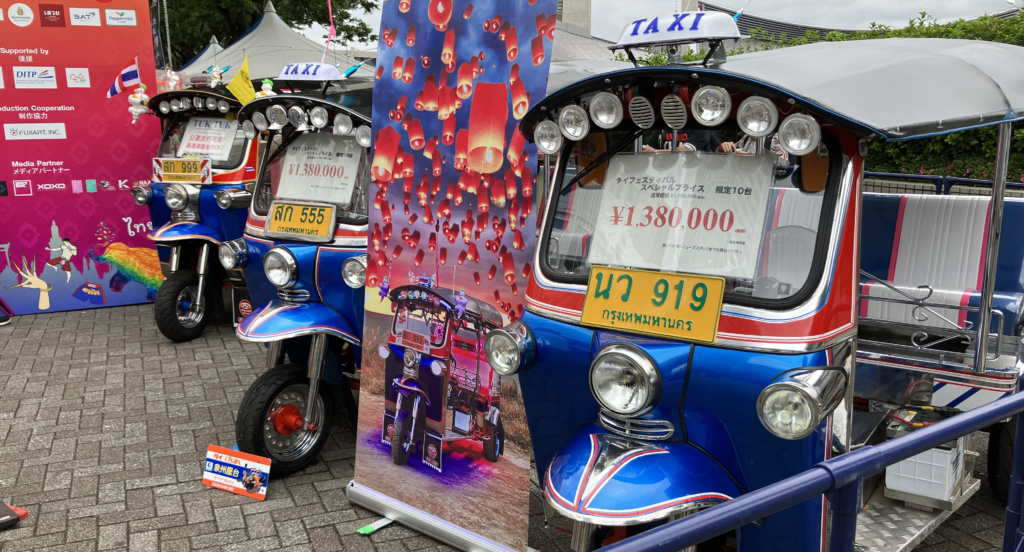
Let’s Experience Thai Festivals and Culture
Hello, everyone! Today, let’s talk about the Thai Festivals. Thai Festivals are events that celebrate the beautiful culture, traditions, and delicious cuisine of Thailand. These festivals feature amazing performances, colorful costumes, and fun activities.
Thai Festivals are held in various cities every year. From major cities like Bangkok and Chiang Mai to small towns and villages, you can enjoy them all over Thailand. These festivals are a wonderful opportunity for both tourists and locals to experience the rich culture and traditions of Thailand.
At Thai Festivals, you can witness traditional Thai dances and music performances. You can also visit beautifully decorated Buddhist temples and historical buildings. And of course, you can indulge in delicious Thai cuisine. Enjoy your favorite dishes like Tom Yum Goong or Green Curry while experiencing the rich food culture of Thailand.
Moreover, at Thai Festivals, you can purchase traditional crafts and handicrafts. Handmade decorations, clothing, and perfect souvenirs line up for you to choose from. These items reflect the skilled craftsmanship and beautiful designs of Thai artisans.
Thai Festivals celebrate and showcase the beauty and charm of Thai culture and traditions to the world. Be sure to participate in the next Thai Festival and experience the allure of Thailand!
See you in the next blog post!
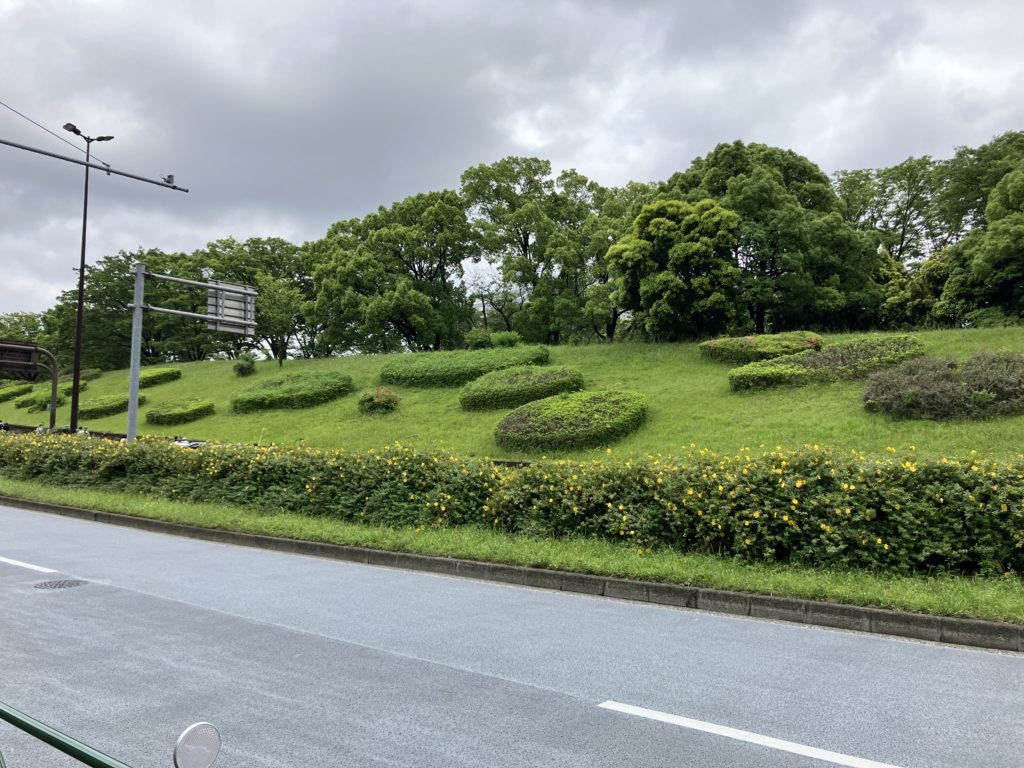
From Shibuya Station, it’s a 20-minute walk, while it’s only 7 minutes from Yoyogi Park Station. Now, which route should I take? Suddenly, I’m faced with a dilemma. Shibuya feels somewhat inaccessible due to the redevelopment around the station. This time, I’ll opt for a new route: starting from Yoyogi Park Station on the Chiyoda Line.
Yoyogi Park Station emerges from deep underground to the surface, and under the lightly clouded sky after the rain, I follow the backs of parents pushing strollers, heading somewhere with a sense of enjoyment. Google Maps indicates a 7-minute walk from Yoyogi Park Station to Yoyogi Park. So far, I’m on the right track.
Even if I use Google Maps, I tend to get lost. In situations like this, where it’s obvious that families are heading to the Thai Festival, “following them” seems like the right choice. Turning left at the intersection onto a gently sloping road, the left side is the moat of Yoyogi Park, and I can’t imagine what’s inside, but on the right side of the road, large buttons reminiscent of Lego blocks catch my eye. “It’s big.”
As I walked straight ahead, a large pedestrian bridge loomed ahead. People were walking from right to left and from left to right across the bridge. It was almost certain that the Thai Festival was taking place in the parks on both sides of this bridge. I thought I had arrived via the shortest route without getting lost this time…
Upon reaching the bridge, most people were entering the park on the left. So, I followed suit and entered the park on the left. I spotted a Thai couple eating Thai bento on a bench, clearly identifiable as Thai. I was convinced that the Thai Festival must be nearby, with Thai food stalls.
After walking for a while, I encountered a young Japanese street musician singing. As I glanced sideways, I speculated that the venue for the Thai Festival would soon appear. But just to be sure, I googled it, and the distance to the Thai Festival remained at 7 minutes. The 7-minute walk from Yoyogi Park Station was already over. Had I walked 7 minutes from the park entrance? I took a deep breath and reassured myself. There was no doubt that I was in Yoyogi Park. The Thai Festival’s event page also stated “within Yoyogi Park.” I decided to stop worrying and embrace the theme of enjoying nature, assuming the Thai Festival would appear soon.
Finally, I reached the edge of the park. There was a dog run corner. It was a compulsory free activity where people brought their dogs, removed their collars, and let them run inside the fenced area. The dogs seemed carefree, which I envied. I couldn’t claim to be enjoying nature innocently anymore. I had been on this journey of doubt and uncertainty for about 30 minutes. It felt like the situation of “Let’s Go to Kyoto”; I thought it might be easy if I just called the event organizers for directions.
When a woman answered the phone, I said, “I’m heading to the Thai Festival and I’m currently near the dog run in Yoyogi Park. Which direction should I go from here?” She replied, “I’m not sure where the dog run is, but do you see any signs for the Thai Festival?” From here on, let me describe the rest of our conversation in a poetic style.
Mango Taro: A middle-aged man who wants to go to the Thai Festival. Event Staff: Sawadi Hanako, a young woman who works as a regular part-time staff member for the Thai Festival, but has no interest in Yoyogi Park itself. "Mango Taro: Are there any prominent buildings nearby?" "Sawadi Hanako: Yes, there are some at the event park. It's near a major road." "Mango Taro: Ah, near a major road. Since I'm currently at the edge of the park, I'll head back to the entrance." "Sawadi Hanako: It's near the pedestrian bridge." --- Yep, that's what I was expecting. Mango Taro walked half a lap around Yoyogi Park counterclockwise. Determined to return to the entrance, he checked his pedometer and found he had already taken 7235 steps. He had walked too much. At times like this, he always took it in stride. "The destination is still a distance away, but please build up your leg muscles while walking" (Yoyogi's deity) After about 15 minutes of walking, he finally reached the entrance's pedestrian bridge. His bad habit of always going the opposite way had struck again today. There was a map signboard at the park entrance. He had overlooked it because it was slightly off. Climbing the stairs of the pedestrian bridge, he realized there was an event park on the other side of the road. It had been a long journey. What had happened on the "other side of farewell" for Momoe Yamaguchi? On the "other side of the pedestrian bridge" for Mango Taro, there was the Thai Festival!
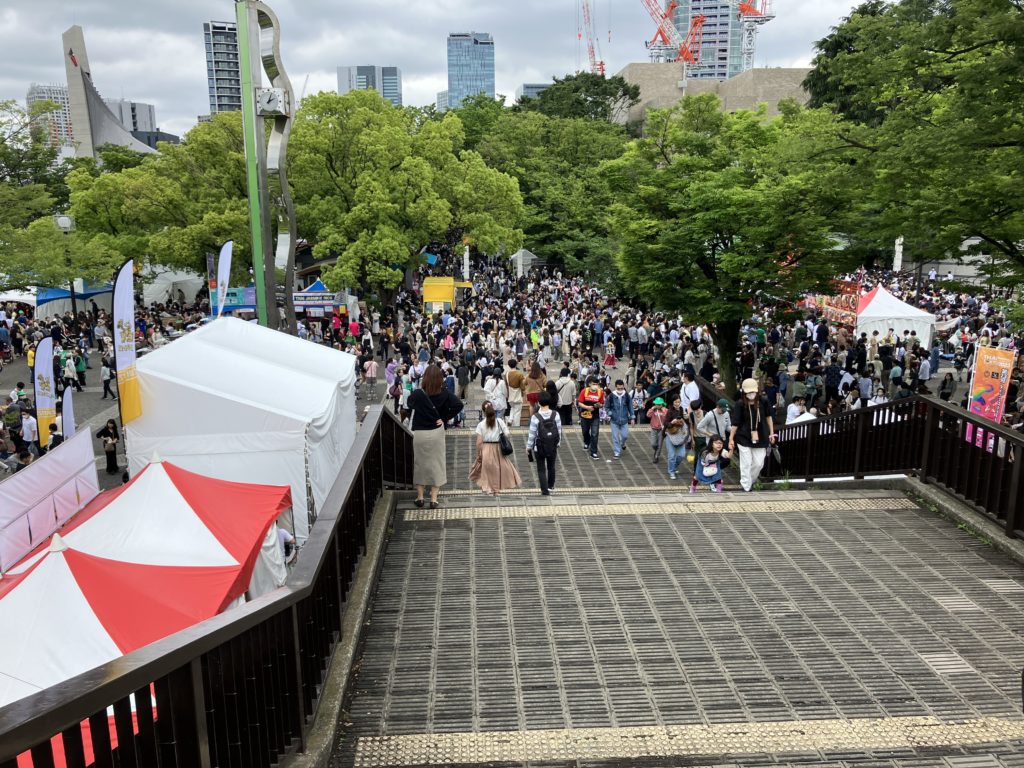
It took me over an hour to get here. I took a gamble on a slightly overcast Saturday afternoon instead of a sunny Sunday, thinking there might be fewer visitors on Sundays. But no, the rain had stopped, and it was cool, so Saturday turned out to be popular too. I quite like the slogan seen at the Thai Festival: “Thai people who like Japan, Japanese people who like Thailand, See Thai, Eat Thai, Drink Thai, Play Thai.”
Every booth had long lines. I remember asking my Thai friends once, “Don’t you have the concept of being efficient and fast?” and they replied with a big laugh, “No, we don’t.” The relaxed lifestyle in hot countries might actually be something Japanese people should learn from. There were designated garbage collection points at the event, so it seemed to be managed by the organizers. It’s probably a scale that requires joint planning and preparation by both Japanese and Thai people. As expected, food was incredibly popular.

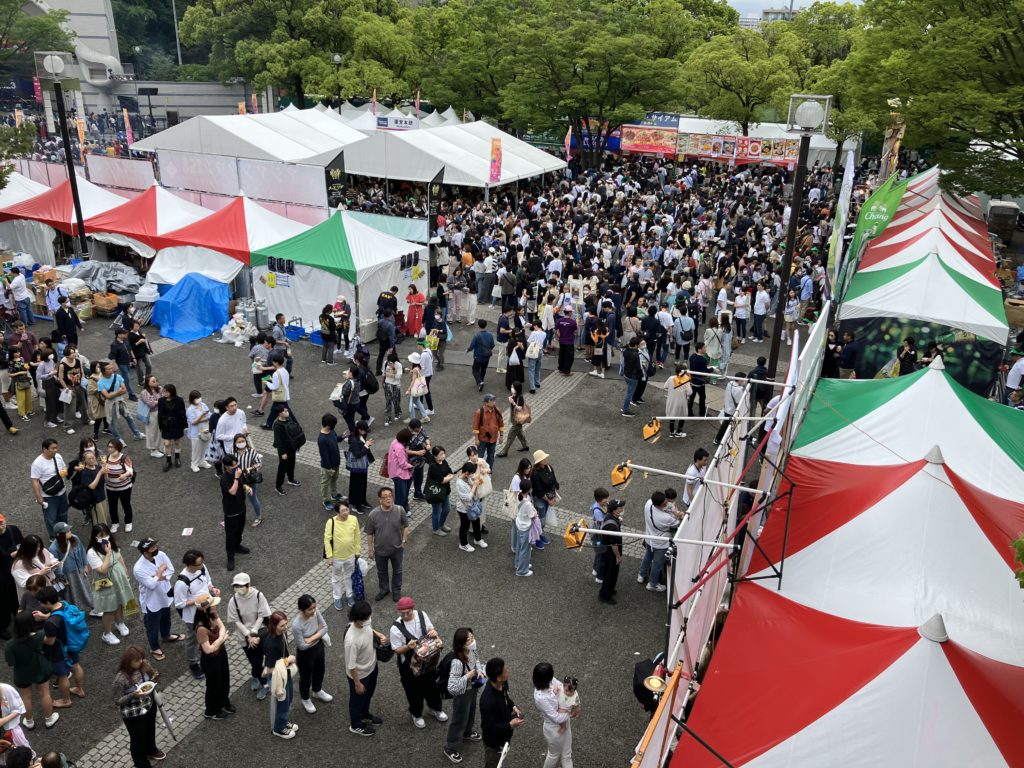
The purpose this time was to assess the suitability of the location as a sales point for basket bags, which are being promoted with the cooperation of Thai factories, and to investigate the price range. This year marks the 23rd Thai Festival, held nationwide, so the exhibitors appeared to be seasoned vendors. To sell here, one must present a wide variety of products with depth. Nonetheless, it wasn’t a waste as I was able to carefully observe what items customers were picking up, such as average prices and souvenirs for the festival.
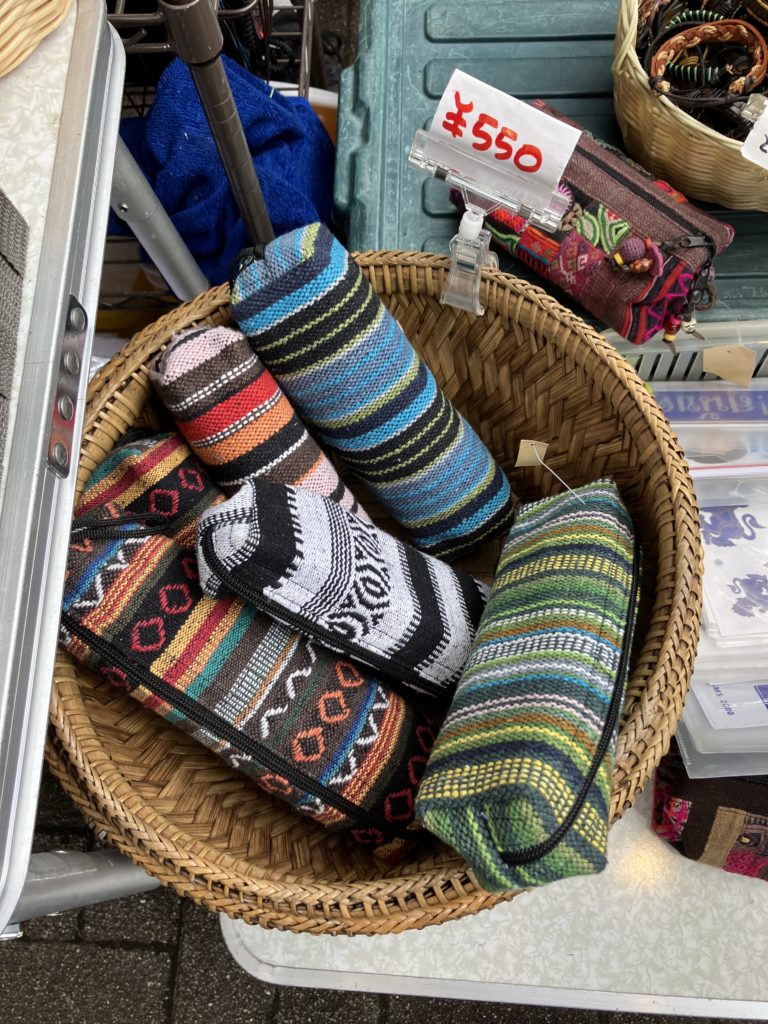
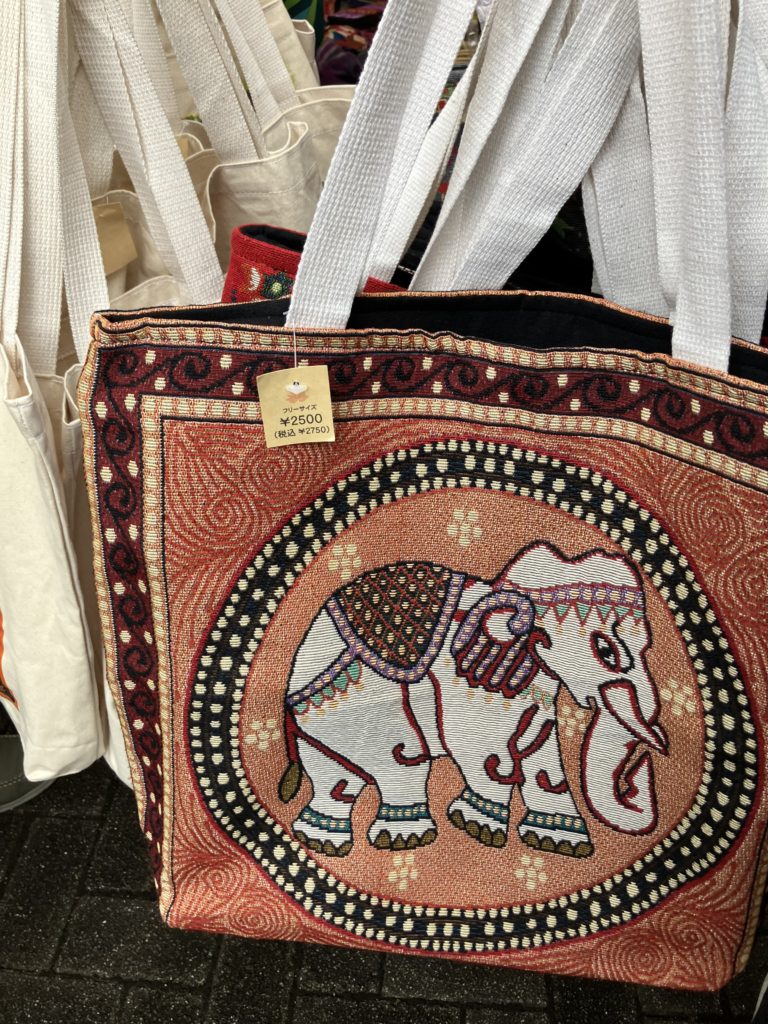
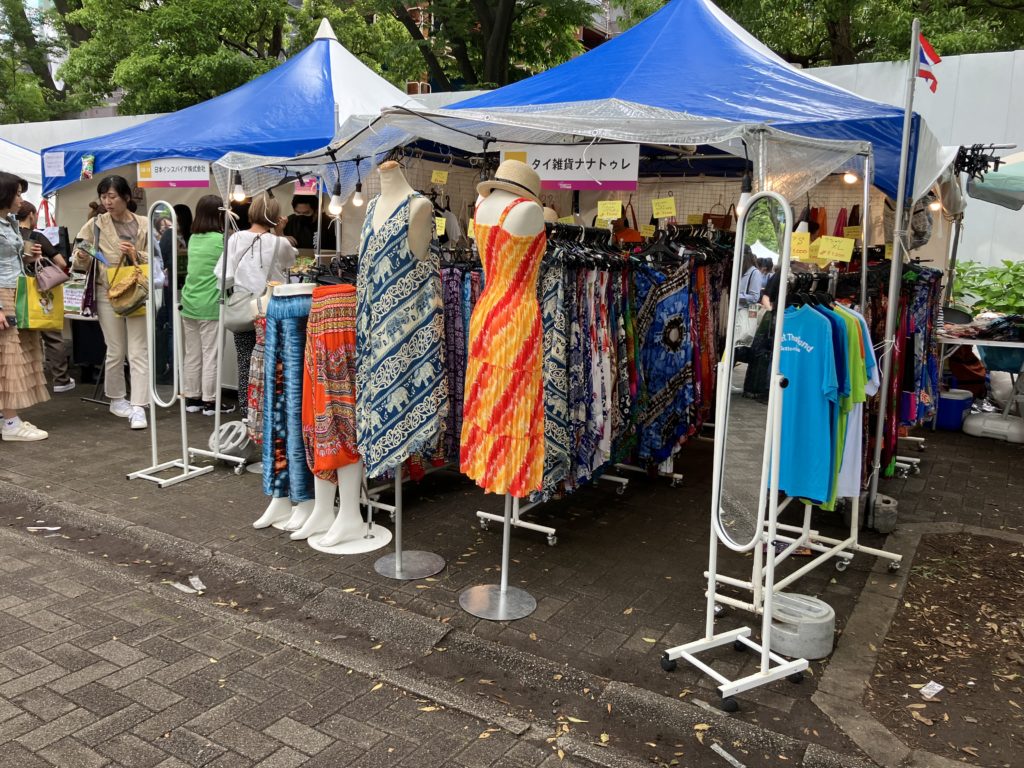
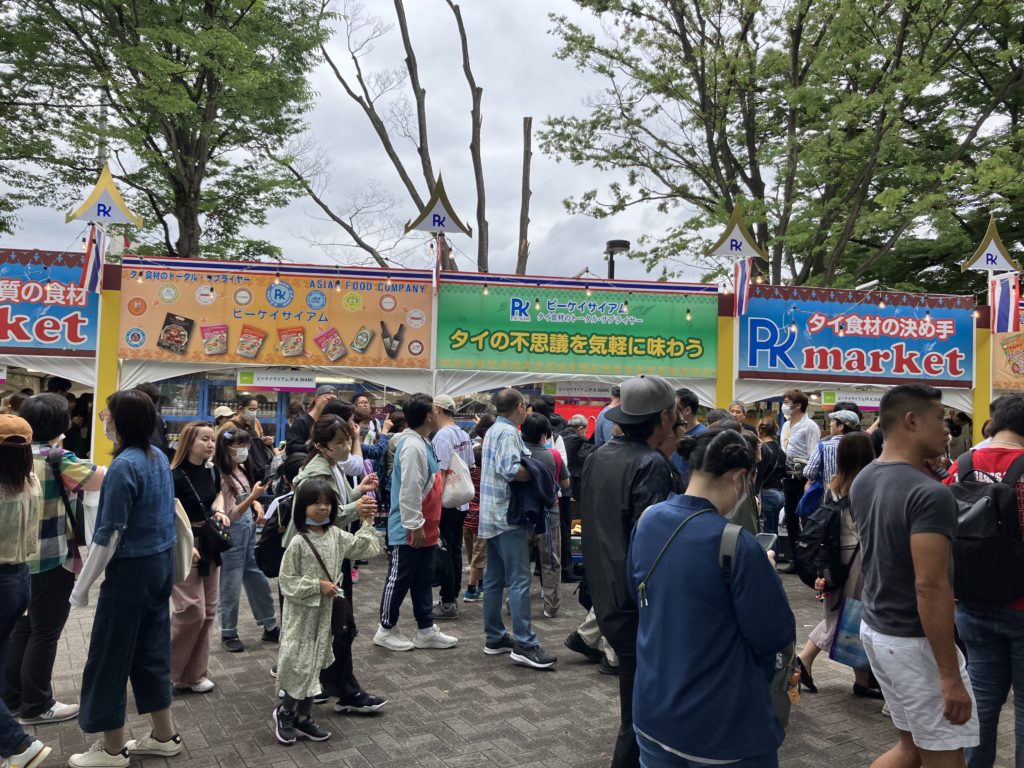
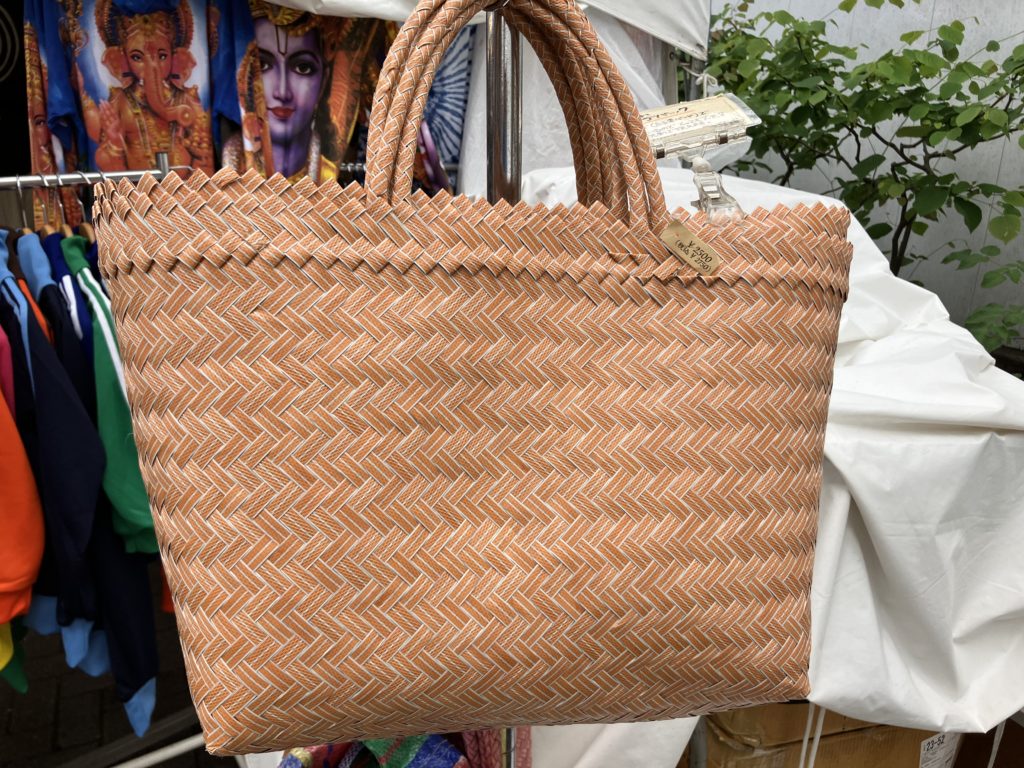
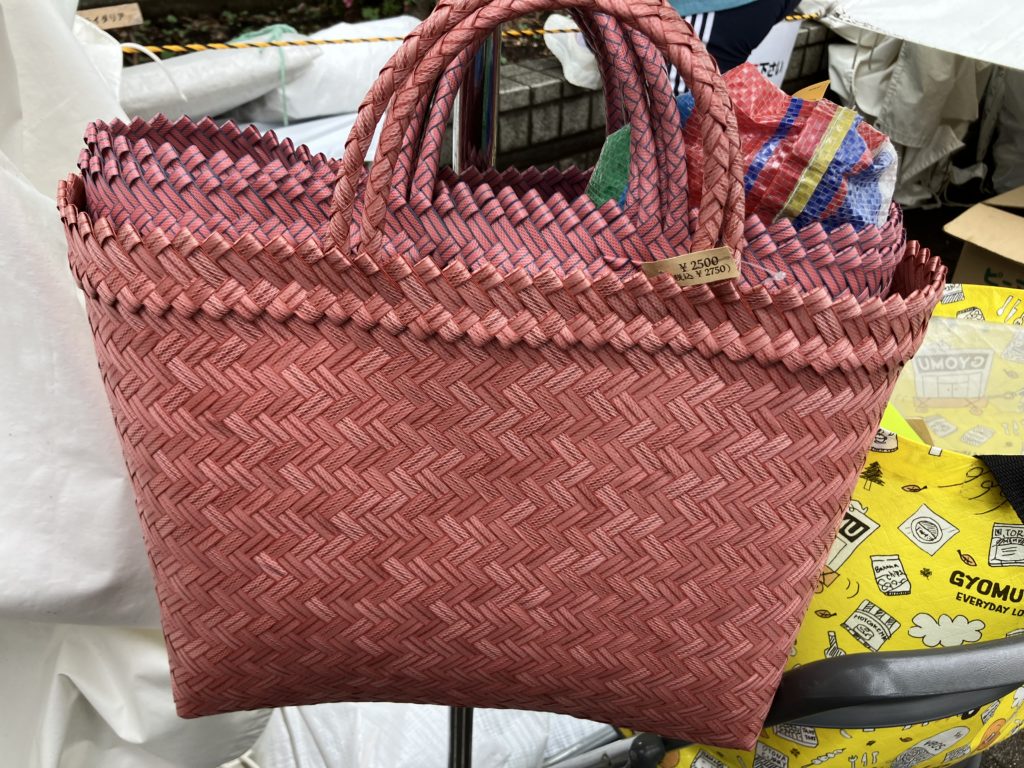
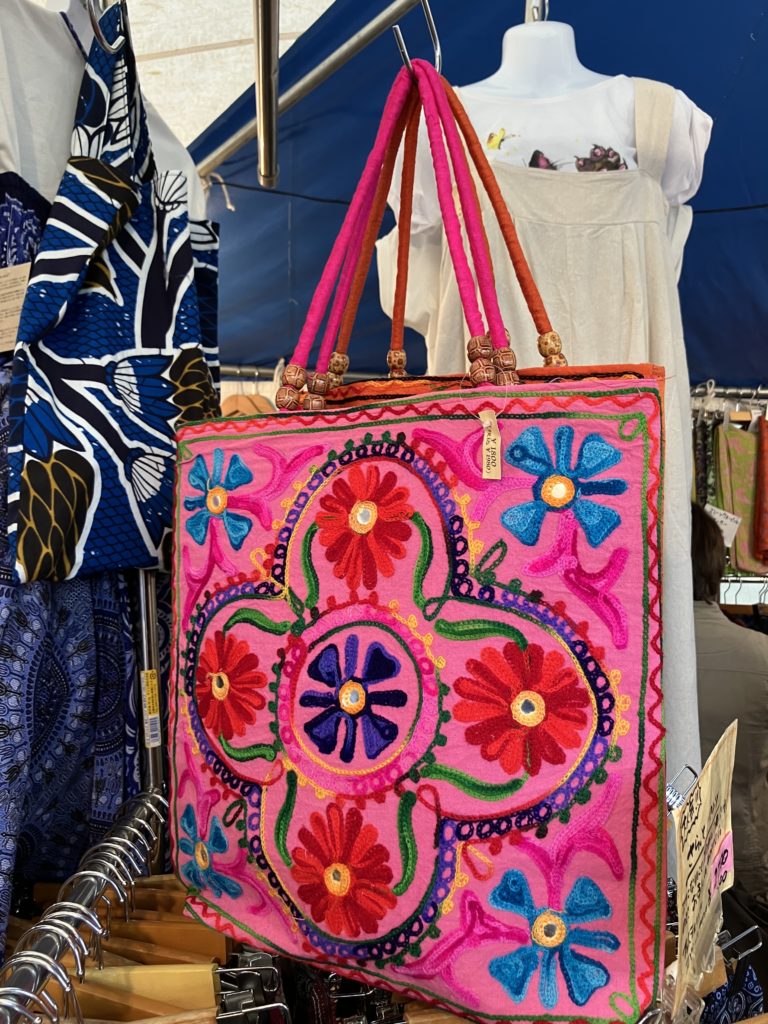
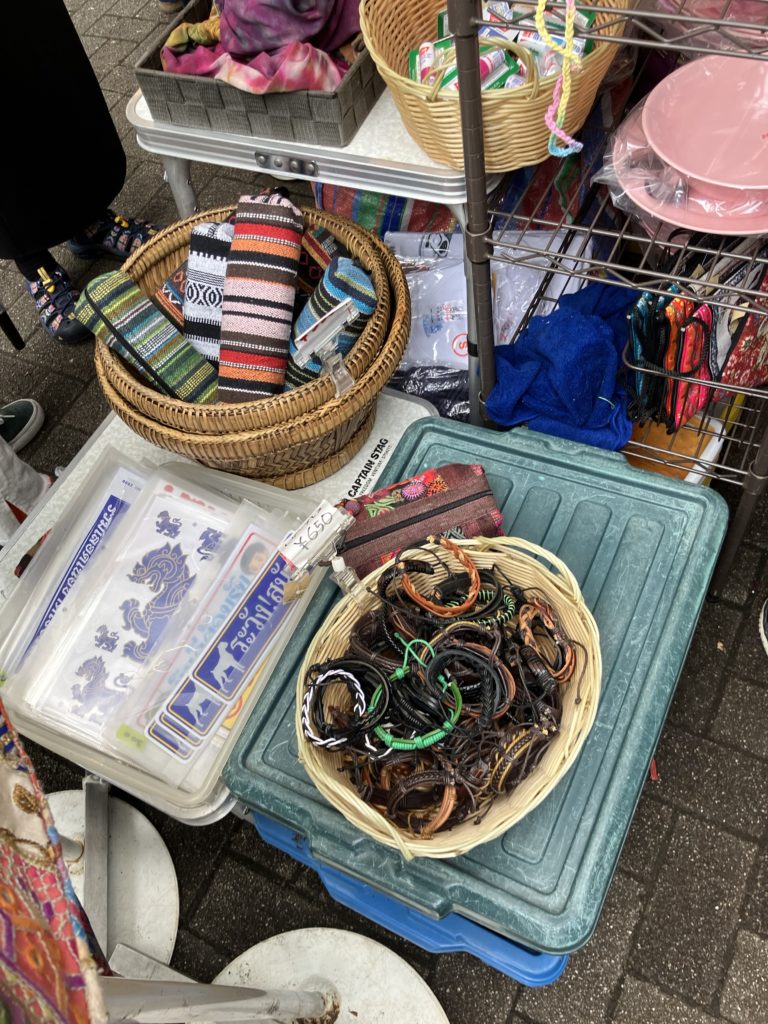
Having walked for over an hour, I'm sweating. My throat is dry too. They were selling Singha Beer from Thailand. "Drink Thai," "Get Slim Thai," but today, I'll refrain. It's work, after all.
I burst into laughter when I passed by the Thai massage booth. The blissful expressions of the unknown actors, lined up in a row and visible to passersby, were like a curtain call on a forced stage, attracting the attention of onlookers. It’s 1000 yen for 10 minutes. The price for a 10-minute haircut has also increased to 1200 yen. It gives a slightly cheaper impression intuitively. Mangoes sold at high-end supermarkets like Seijo Ishii are around 600 yen (excluding tax), but here they were 500 yen including tax. Let me also share a photo of Chiang Mai’s Night Bazaar. They’re more than twice the size of mangoes imported into Japan. THB60 equals around 220 yen. When converted to the size imported into Japan, it’s about 100 yen. It reminded me of a story TAM, a taxi driver from Chiang Mai, who also worked as a mango farmer, once lamented about how the purchase price was too low to make a profit.
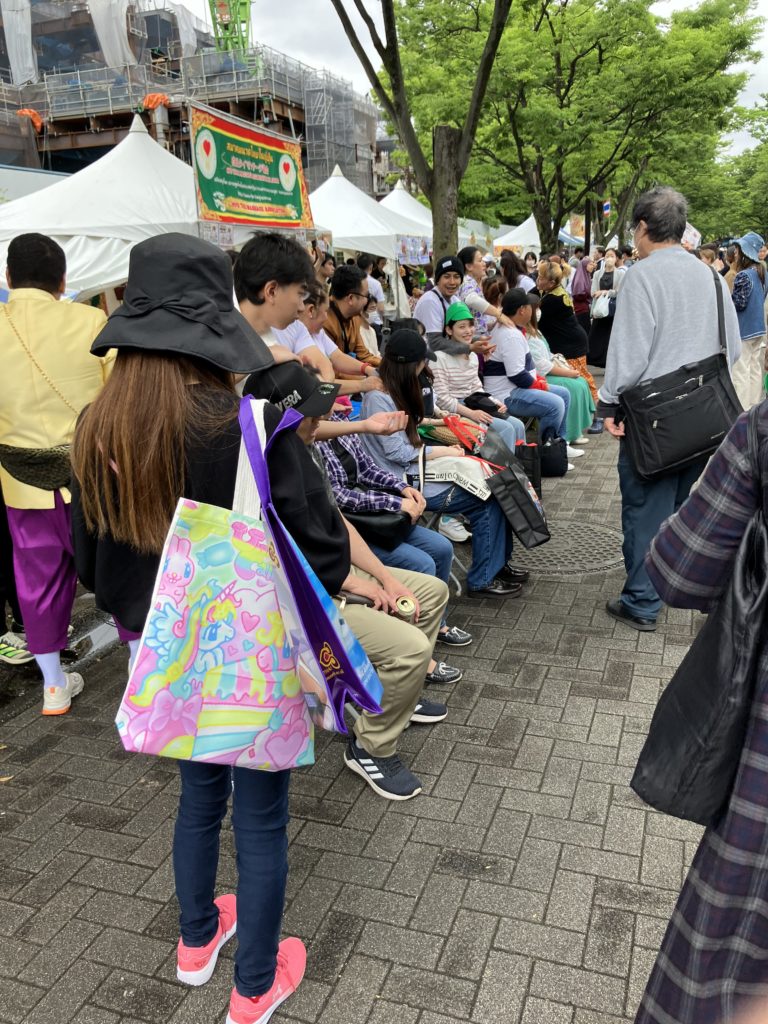
In conclusion, here are my impressions and future outlook:
- Thai Festival is undoubtedly a highly popular event among Japanese people.
- It is supported economically as part of a collaboration between the Thai Embassy in Japan and DITP (Department of International Trade Promotion) in Thailand to promote exports.
- As the Thai boom continues to permeate Japanese society and the longstanding friendly relationship endures, Thai products are expected to become even more familiar and accessible to Japanese consumers.
As for our company’s mission:
We plan to establish procurement routes and conduct preliminary research (exhibition research in Bangkok) with local project members (May 2023). We will then travel to North Malaysia (Southern Thailand) where the manufacturing plant is located to hold development meetings for original products and place orders.
The storytelling aspect of the artisans’ craftsmanship is compelling. While many rely on digital images on social media, we’ll create a 24-page photo album priced at 198 yen each, produced in Japanese, which Thai people cannot do. Although it’s expensive as a promotional album, we’ll incorporate the cost into the product.
We’ll also consider selling through Japanese distributors and online platforms in Japanese, and gift one album to the factory as a token of appreciation.
Please enjoy some photos!! See you again in 2024
